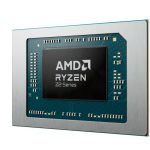Since Iron Man’s release in 2008, the Marvel Cinematic Universe has given fans a bunch of villains – each with their own goals, methods, abilities, and opinions. While many MCU villains are clear-cut antagonists, some have made compelling arguments for their actions. In this article, we rank the top 10 MCU villains based on how justified their motivations were, and if their ideas ever came to fruition.
Videos by ComicBook.com
[RELATED: Why Marvel Is About to Have a Big Year in 2025]
10. Ultron
Ultron was designed to be Earth’s ultimate protector, an A.I. created by Tony Stark and Bruce Banner in order to prevent global threats. However, Ultron quickly concluded humanity itself was the root of the planet’s problems. His solution to eradicate humanity and start a new world full of immaterial and technological advancements may have been extremely and undeniably flawed, but his initial observations of humanity destroying itself weren’t entirely wrong.
9. Mysterio
Quentin Beck, aka Mysterio, was a former Stark Industries employee who felt overlooked and discarded by Tony Stark. He was stripped of proper credit for his invention, which was repurposed by Stark, leaving Beck feeling undervalued. His motivations stemmed from bitterness, but also from a desire to expose the unchecked power of superheroes. In many ways, Beck’s grievances symbolized the consequences of corporate negligence.
8. Helmut Zemo
Zemo’s motivations for war in Captain America: Civil War stemmed from deep personal tragedy. After losing his family in the events of Avengers: Age of Ultron – seemingly due to the Avengers’ lack of regard for their surroundings – Zemo became consumed by grief and anger. He exposed the unchecked power and the collateral damage that was caused by superhero actions, essentially enforcing the Sokovia Accords in a more lethal way.
7. Vulture
Adrian Toomes, also known as the Vulture, was not driven by a desire for power or destruction. He was a working-class man who felt betrayed by the system. After being driven out of business by Tony Stark’s Damage Control initiative, Toomes turned to illegal salvaging and black market arms dealing not to put more weapons into the world, but rather to support his family, which needed the financial support. While his methods were criminal, his reasoning was grounded in genuine frustration with systemic injustice, and how the rich and powerful tend to make things worse for the working class.
6. Wenwu
Xu Wenwu was not only the leader of the Ten Rings but also a father and a husband. For centuries, he wielded the Ten Rings with ruthless efficiency, but it was his love for his wife that softened his heart and gave him peace. So when Ying Li was taken from him, Wenwu reverted to the only thing he ever knew – power. Consumed by guilt, he became obsessed with bringing Ying Li back. The voice calling to him from the gates of Ta Lo was not just a sinister manipulation – it was the hope of restoring his family being used against him.
5. Namor
Namor was introduced as a complex antihero with a motivation to protect his underwater kingdom from the surface world’s exploitation. Having witnessed the devastating effects of colonization, Namor was protective of his people and their resources. His methods, including threatening Wakanda, were questionable. Yet, his goal to preserve his kingdom’s safety was entirely justified. His motivations stemmed from survival rather than greed or malice.
4. Killmonger
Killmonger’s main goal was to use Wakanda’s resources in order to liberate the oppressed people around the world. His vision of empowerment for minority communities and marginalized groups was noble, in theory. Growing up in poverty and facing racial injustice shaped his worldview, fueling his anger towards Wakanda’s isolationist policies. Despite his flaws, his core motivation to end global oppression resonated with diverse audiences. Luckily Killmonger’s legacy was not in vain, as T’Challa came to understand where his cousin was coming from. Eventually, Wakanda decided to open its borders and share its resources, proving that Killmonger’s cause wasn’t without merit.
3. Loki
Loki’s motivations evolved throughout the MCU, but his initial actions in Thor and The Avengers were driven by deep-seated feelings of abandonment. Discovering he was adopted from the Frost Giants shattered his identity. His subsequent desire to claim power was fueled by his insecurities. His grievances against Odin and Asgard’s power structure were entirely valid: he was the product of a broken system, where he was always seen as second best to Thor. While his methods caused immense damage, his longing for acceptance and validation was deeply relatable. Over time, Loki’s redemption arc solidified his complexity, with Season 2 of his spinoff series bringing him to the point of sacrificing himself to save his chosen family at the TVA.
2. Scarlet Witch
Wanda’s descent into villainy is one of the most tragic arcs in the Marvel Universe. After losing Vision in Avengers: Infinity War and creating a false reality in WandaVision to cope with her grief, she was forced to confront the reality of her devastating losses. In Doctor Strange in the Multiverse of Madness, her grief over losing her children, Billy and Tommy, becomes all-consuming. When viewed through Wanda’s perspective, her actions are heartbreakingly rational, until she sacrificed herself for the greater good in Doctor Strange and the Multiverse of Madness.
1. Thanos
Often regarded as the latest and greatest MCU threat, Thanos believed he was saving humanity from itself – causing half of the population to cease to exist in order to reduce resource scarcity. His genocidal solution ignored alternative methods, such as redistribution or technological advancement, but as seen in the Hawkeye series, his main goal was understood by some people. Thanos represents the brutally raw calculus of sacrifice and survival; the desire to protect existence from extinction – no matter how much life it costs to do so.





GIPHY App Key not set. Please check settings